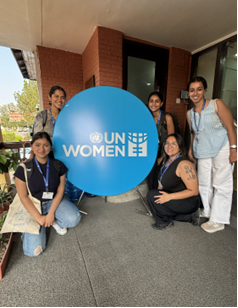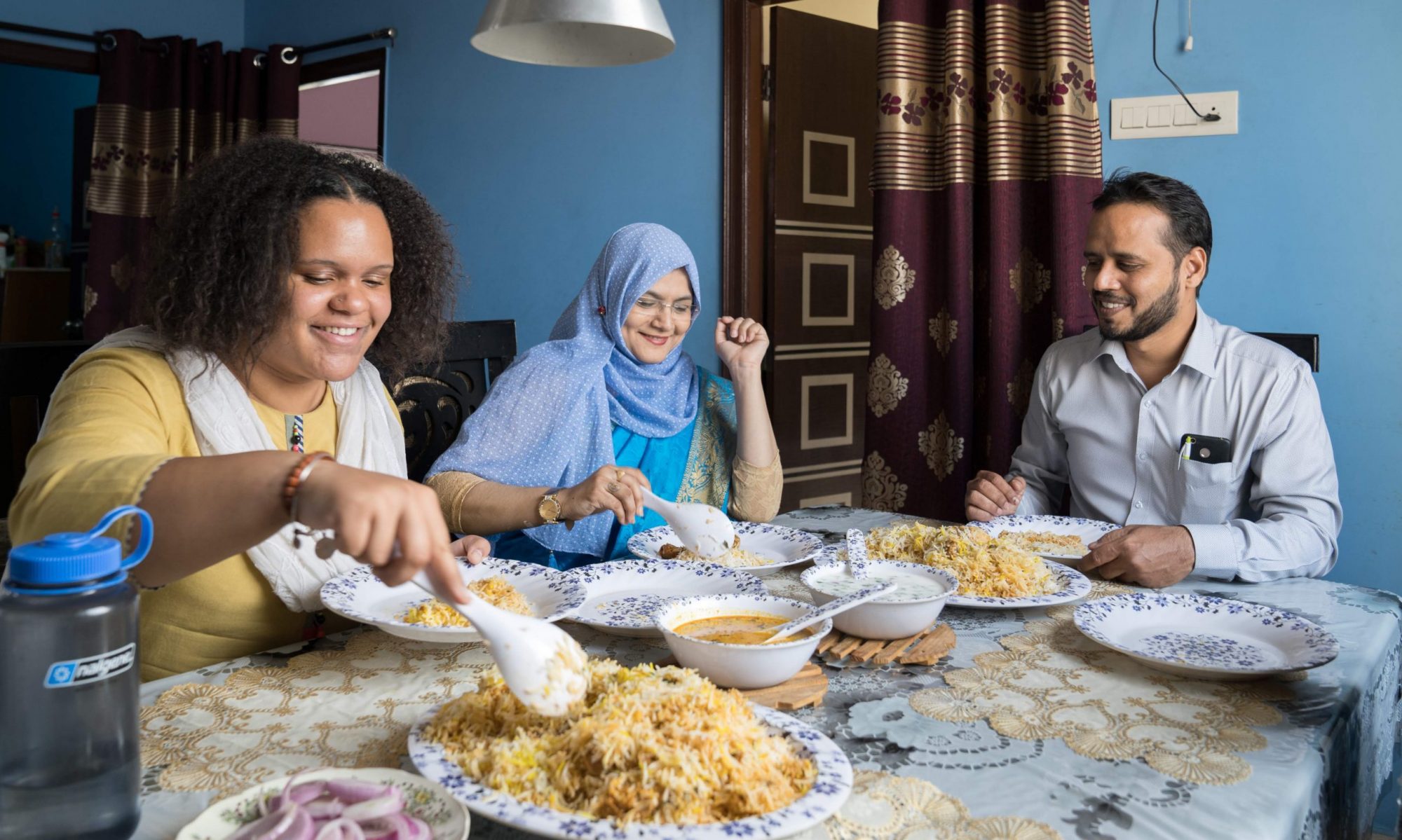By Hanshika Neupane

As an international student, embarking on a research trip to Nepal, which is also home to me is truly an experience to write about. As I write this blog post from the heart of Nepal, with the hustle and bustle of the city, the ringing of bells from nearby Temples, the chitter and chatter of neighbors greeting each other loudly, and fruits and vegetables vendors out in the street selling the freshest produce right outside of our homes, I am filled with a sense of both familiarity and strangeness. After spending a year studying in the United States, coming back to my homeland has been an extraordinary experience. When I first landed, this place felt equally foreign. I had almost forgotten the smell of the air, the chaos in the streets, the noise, and familiarity in people’s faces. I had missed being able to talk in my mother tongue. As a FGLI student, having spent all my life in Nepal, I waited all my life to escape from this chaos. But almost a year later, when I was presented with the opportunity to return to Nepal for research, I couldn’t have been more excited.
Along with four of other SARC members traveling to Nepal, we embarked on this academic as well as cultural experience. The first two days after our arrival in Kathmandu was full of showing my friends around the city. As a local person to Kathmandu, I knew I had to take them to my favorite spots around to give them the most authentic experience. Be it taking them to Swayambhunath also known as monkey temple to witness monkeys eating ice cream and sipping on boba tea, or leading them through the bustling streets of Thamel to experience the lively nightlife, or altering the menu for “life-changing momos”, I was committed to giving them a genuine taste of Kathmandu.
Our research trip was an intense and enlightening experience, deeply rooted in the exploration of women’s issues in Nepal. As five women researching various aspects of women’s lives, we found ourselves frequently bonding over our shared experiences of growing up in South and Southeast Asian households. These conversations added a personal dimension to our work, enriching our understanding of the cultural nuances that shape women’s experiences in the region. These conversations only further enhanced my passion for the research topic I am looking at. Despite being born in Nepal and having an intrinsic understanding of the caste system and its pervasive hierarchy, talking to experts on history and sociology has been profoundly eye-opening. The caste system in Nepal is deeply ingrained, with the term “Dalit” referring to the lowest social group in this hierarchy, historically known as Shudra and often labeled as untouchable. I am passionate to explore the Dalit movement post-1990, following the restoration of democracy, focusing specifically on Dalit women who constitute 15% of the population. This demographic has often been excluded from historical narratives, particularly in the context of political upheavals.
Throughout our trip, we had the privilege of meeting with a diverse array of experts, professors, and officers from various UN departments, including UN Women and UNICEF. These interactions provided us with valuable insights into the systemic issues affecting women in Nepal, particularly those from marginalized communities. I had the opportunity to visit organizations and speak with anthropologists and authors who work heavily with digital archives and repositories. One of the most impactful experiences was coming across a photobook that collates photographs of Dalit lives and resistance spanning the last six decades across Nepal. This powerful volume, enriched with essays exploring the economic, social and political dimensions of Dalit struggles, highlights the historical presence and contributions of Dalits in Nepali public life. The conversations I had with the authors and translators of this book has further increased my interest in the role of visual media in advocating for social justice and definitely enriched my research on the lived experiences and resilience of Dalit women in Nepal.
This research trip has just not been about academic inquiry, it has also been about the commitment in whatever tiniest ways of rectifying historical imbalances and contributing to ongoing efforts towards justice and equity in Nepal.
